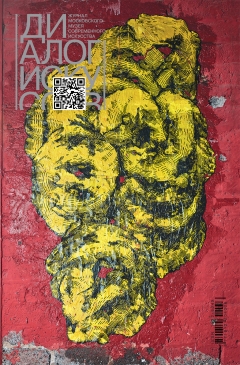The curator and commissioner of the Russian Pavilion at the Venice Biennale Semyon Mikhailovsky told Svetlana Gusarova what surprises “Station Russia” will bring and whom he has chosen as his travelling companions.
|
|
Svetlana Gusarova. The curators of the Architecture Biennale in Venice, Yvonne Farrell and Shelley McNamara suggested discussing social responsibly and the wellbeing of every person on earth. What is your interpretation of the proposed theme “Free Space”?
Semyon Mikhailovsky. The title “Free Space” arouses interest; it is friendly and politically correct. Of course, the national pavilions’ curators are waiting for the main exhibition’s motto to be announced but only to make slight corrections to the already existing projects. The biennial is not an exam where one is asked specific questions and is expected to give specific answers.
S.G. So you have been looking forward to the idea of making a project on railways for a long time?
S.M. I would be lying if I said no. It would be strange to think that one could produce an exhibition from scratch in the course of one year. First of all, the national pavilions develop themes that either are relevant to their countries or address historical issues. For us the discussion on free space is not primarily about humanism but is rather about geography, vast territories where everything is connected by railroads. Life in Russia is where railroads are.
S.G. On the one hand, this theme is poetic and is rooted in our culture; on the other hand, it has social meaning. Which perspective have you chosen?
S.M. The whole pavilion space plays on the railway station setting. In the first hall, titled “The Geography of Free Space/ or /Into Geography,” there will be a video portraying the geographic bounds of the country, sprawling cities, the circulatory system of railways, the flows of traffic and people.
It will give an account of various railway stations, starting with the Pavlovsk Railway Station, where people went to enjoy musical concerts, “pleasant relaxation and respectable amusements in the heart of beautiful nature,” to stations deep in the complex city environment.
In the second hall, “Architectural Depot,” designs and models along with vintage and contemporary photographs of railway stations and passengers and stills from security camera footage will be exhibited. In the middle of the hall there will be a model of the first station, Pavlovsk Railway Station, floating above the staircase.
The third hall on the upper f loor, “Waiting for the Future Room,” will contain a futuristic project of the NER group (1960)* and some ref lections on railway stations in big cities as well as a recent project for the reconstruction of the Three Station Square in Moscow. The walls will be covered with huge graffiti produced on commission.
In the lower hall, the fourth one, there will be the “Luggage Room”, lined on each side with lockers filled with artifacts and featuring an installation made out of forgotten or lost suitcases. Finally, in the last, the fifth, hall, “Aboard the Free Space,” there will be an imitation of a large coach window covered with hoarfrost in which the film “7 days in 7 minutes” will be screened. It was shot by Daniil Zinchenko who travelled all the way across the country to meet with his father who lives in Vladivostok, after which he travelled back to Giardini’s green gardens.
S.G. Do you want to embrace both the theme of historic building preservation and that of building new stations? What do they have in common?
S.M. What is most important is to understand passengers’ needs. In general, we are still very much concerned with architecture itself and its grandeur and are less concerned with people who travel and want to do so in comfort. The station in the Olympic park operated at its normal load only during the Olympic Games. It was built on a grand scale that is of no use now. The luggage room and shops are closed there; the sense of abandonment is palpable. It turned into a monument to the Olympic Games. I spend a great deal of my time in both Moscow and St Petersburg and frequently travel by train. Once when I was drowsing in an early Sapsan train I heard the words “Chudovo Station” [literally ‘Miracle Station’]. It became a subtitle for our pavilion. One would expect that on hearing of such a place, everyone would get off the train but no one did. Everyone continued on their journey. This is what life in Russia is about – they continue their journey and yet there are people who live in Chudovo, as follows from the fact that the station was built.
S.G. Now it looks like we will have to get off at Chudovo Station and see this city...
S.M. This is exactly what I want to do. We all have a tendency to naévely envi- sion some place somewhere, where we have never been, where there is a train station and where life is good. Life as a marginalized person, the station refreshment room – here you can’t help thinking of Venichka Erofeev. There are also many films that come to mind. Not to mention the fact that cinema began with the arrival of a train and not a bike passing by.
S.G. What do you think an ideal station should look like?
S.M. Clear navigation, so one would not have to drag one’s luggage along endless passages and staircases; access to information about one’s train. However, I am an architecture person so my favorite train station is the Milan station. It is imposing.
S.G. Do you look at reviews in the media? Do they offer anything constructive? S.M. Each year we amass a volume of articles in Russian media and a volume of articles in foreign media. This year we have a British company working with us. We would like to have access to an external viewpoint, one that is not caught up in internecine struggles. Recently I have started noticing that in the West criticism is more objective. Our media suffers from bias – the same small clique of people consistently gen- erating ideas. Their inf luence has been a major distraction; instead of listening to oneself one starts listening to other voices. I lived in the USSR and remember when the politicized media would simply parrot the state’s position. Now they have been replaced by the clique.
S.G. You have announced that the Hermitage will be the partner of the pavilion. What is behind this decision?
S.M. Before that, everyone used to be unhappy because we would always announce the theme and participants too late. To dispel the intrigue I decided to plan everything five years ahead. We will prepare the 2019 exhibition with Mikhail Piotrovsky. Probably several artists will be presented (although I often hear that only one artist should be exhibited in a pavilion), they will probably be Russian (however this may change) and probably young.
S.G. What should be done to make Chudovo Station a station where one would want to get off and stay for a while?
S.M. This is a question that concerns the whole country. The fact that I can travel and my students also can travel is very important. One may want to get off at Chudovo Station because this is an adventure and it deserves to be visited despite all the difficulties in our lives.
*“New Element of Settlement” “(“Novy Element Rasselenya”) – a diploma project, produced by a group of graduating students of the Moscow Architectural Institute (A. Gutnov, I. Lezhava, A. Babu- rov, A. Zvezdin and others). The key point of the work was to reassess urban design on the basis of transport infrastructure, which implies considering it as a dynamic process.




